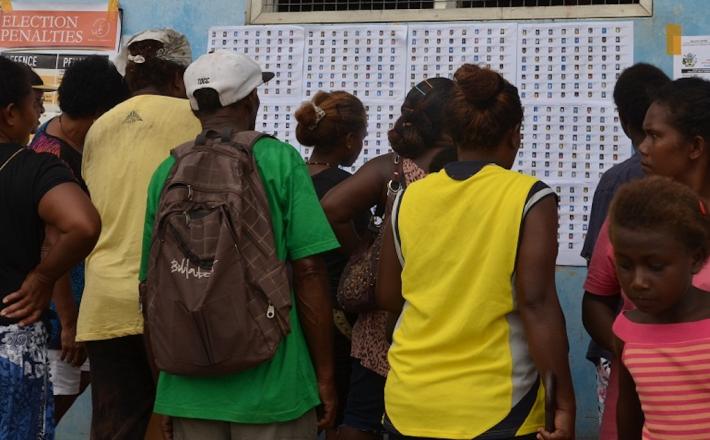How will women fare in Solomon Islands elections?
Source: The Interpreter
By Kerryn Baker
In terms of women’s representation in politics, Solomon Islands lags behind much of the world. In April, Solomon Islands will hold the first general election since the departure of the Regional Assistance Mission to Solomon Islands (RAMSI). There is one incumbent female MP. This means Solomon Islands ranks 50 out of 52 Commonwealth countries in terms of women in parliament, beating only neighbours Vanuatu and Papua New Guinea, which both currently have no women MPs at all.
Only four women have been elected to the Solomon Islands parliament since independence: Hilda Kari (in office 1989-2001), Vika Lusibaea (2012-2014), Freda Tuki (2014-2018), and Lanelle Tanangada (2018-present). Last year marked the first time in Solomon Islands history that two female MPs have served at the same time (albeit briefly). This was from July 2018 when Lanelle Tanangada was sworn-in as a new MP, after her by-election victory in Gizo/Kolambangara, to October 2018 when Freda Tuki lost the seat of Temotu Vatud in a court challenge.
So what can we expect from the 2019 election to be held 3 April in terms of women’s representation?
Number of women candidates
For the upcoming election, there has been a general decline in candidate numbers – from 447 in 2014, to 335 in 2019. in part, this is attributed to a higher nomination fee and Cyclone Oma, which restricted travel around the country during the nomination period. The number of women candidates, however, has remained relatively stable at 25 (compared to 26 in 2014), making up around 7.5% of total candidates.
Higher numbers of women contesting does not necessarily correlate to better performance of women candidates. In the 2014 election, most were relatively uncompetitive, with over 80% of the women candidates winning less than 10% of the vote in their electorates. This holds true for male candidates too – the majority of those who have contested Solomon Islands elections have won less than 10% of the vote.
Click here to read the full article published by The Interpreter on 27 February 2019.

By Kerryn Baker
In terms of women’s representation in politics, Solomon Islands lags behind much of the world. In April, Solomon Islands will hold the first general election since the departure of the Regional Assistance Mission to Solomon Islands (RAMSI). There is one incumbent female MP. This means Solomon Islands ranks 50 out of 52 Commonwealth countries in terms of women in parliament, beating only neighbours Vanuatu and Papua New Guinea, which both currently have no women MPs at all.
Only four women have been elected to the Solomon Islands parliament since independence: Hilda Kari (in office 1989-2001), Vika Lusibaea (2012-2014), Freda Tuki (2014-2018), and Lanelle Tanangada (2018-present). Last year marked the first time in Solomon Islands history that two female MPs have served at the same time (albeit briefly). This was from July 2018 when Lanelle Tanangada was sworn-in as a new MP, after her by-election victory in Gizo/Kolambangara, to October 2018 when Freda Tuki lost the seat of Temotu Vatud in a court challenge.
So what can we expect from the 2019 election to be held 3 April in terms of women’s representation?
Number of women candidates
For the upcoming election, there has been a general decline in candidate numbers – from 447 in 2014, to 335 in 2019. in part, this is attributed to a higher nomination fee and Cyclone Oma, which restricted travel around the country during the nomination period. The number of women candidates, however, has remained relatively stable at 25 (compared to 26 in 2014), making up around 7.5% of total candidates.
Higher numbers of women contesting does not necessarily correlate to better performance of women candidates. In the 2014 election, most were relatively uncompetitive, with over 80% of the women candidates winning less than 10% of the vote in their electorates. This holds true for male candidates too – the majority of those who have contested Solomon Islands elections have won less than 10% of the vote.
Click here to read the full article published by The Interpreter on 27 February 2019.